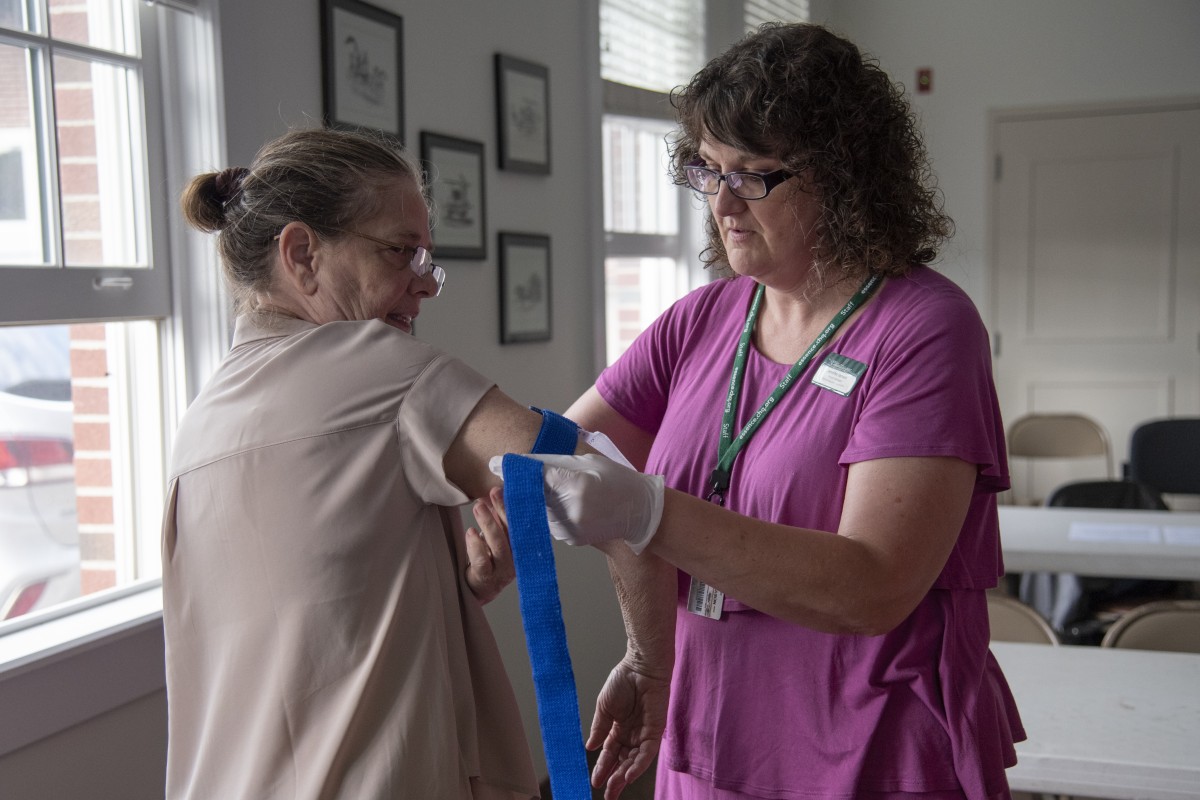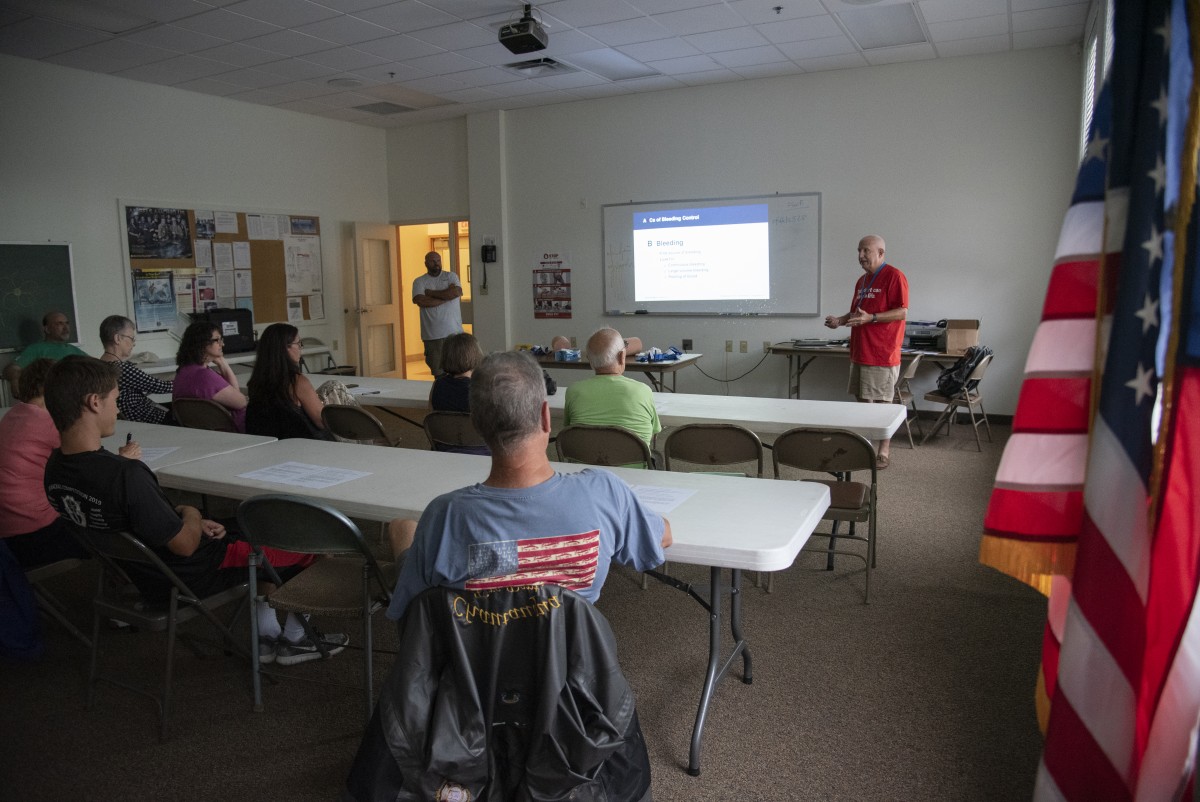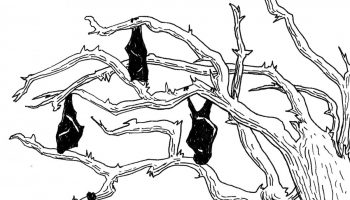Saving a life is as simple as A.B.C. — alert 911, identify bleeding and apply compression — according to retired general surgeon Sidney Holec.
At 3:30 p.m. Tuesday, August 20 as he has every Tuesday this season, in the Chautauqua Fire Hall, Holec — along with Chautauqua Institution volunteer firefighters and emergency medical technicians — leads “Stop the Bleed,” a national awareness and education campaign, training bystanders to help in bleeding emergencies.
Stop the Bleed is a 2015 initiative of the U.S. Department of Homeland Security and the American College of Surgeons. As of 2017, over 30,000 people nationwide have taken the course; more than 125 Chautauquans have taken Holec’s course so far this season, he said.
“Dying from a stoppable bleed is a common cause of death,” Holec said. “If you’re on the scene, you can stop the bleeding and stop (someone) from going into shock. There’s a point after losing so much blood, even if (they) make it to the hospital, you can’t bring them back.”
This training is extremely timely as the United States is experiencing a pandemic of mass shootings, Holec said. In just the last month, more than 30 people were killed in mass shootings in El Paso, Texas, and Dayton, Ohio; dozens more were injured.
In the 1999 shooting at Columbine High School in Colorado, Holec said several people died from stoppable bleeds; scores of lives were saved using compression during the 2017 Las Vegas shooting when a gunman opened fire on a crowd of concert-goers, killing 59 people and wounding over 500.
“It’s sad that we’re at this point,” Holec said.
Compression requires applying intense pressure to cut off blood circulation to a wound. Holec’s class teaches two techniques: packing a wound and using a tourniquet. A tourniquet is fastened 2 to 3 inches above a wound — avoiding joints — and tightened and twisted until the bleeding ceases.
The same effect of a tourniquet can be replicated with a number of common household objects, according to Chautauqua Volunteer Fire Department Chief Jessie Briggs, including a shoelace, the band of a bra, a belt, lanyard or shirt. The objective is just to wrap it tight enough around the injured limb to reduce or cut off circulation.
“If they’re not screaming and yelling because it hurts, it’s not tight enough,” he said.
If it’s a deep wound or gash, Holec said to pack it down to the artery against the bone with gauze, coated in a clotting agent, or any available material, and apply direct pressure.
According to the American College of Surgeons, hemorrhage is the most common cause of preventable deaths in trauma and accounts for approximately 40% of trauma-related deaths worldwide.
“We’re all potentially exposed to major trauma,” Holec said. “And not everybody can be saved — they may have lost so much blood that even if you get a tourniquet on, it’s not enough. But at least they have a chance.”








